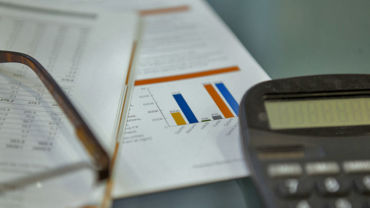As accounting professionals know all too well, it can be a challenge to run a practice, provide great customer service, keep up to date with constantly changing regulations and tax laws and (in case that’s not enough) stay informed on the latest technology trends and innovations.
Practitioners often tell me they’re concerned they could be missing opportunities or falling behind because they’re so focused on all the things that go into managing a well-run practice. There’s certainly a danger of falling behind — or, more importantly, not taking advantage of opportunities to expand in new areas or add new services.
That’s where Big Data and data analytics could come in—concepts that have the potential to change your practice and the services you provide to clients in a positive way.
A quick Google search will show you that there are many books, articles and videos that describe Big Data and its impact today (and tomorrow) on businesses. I won’t try to repeat all that information here, but instead, I’ll distill down some information on Big Data as it applies to data analytics, and give you some things to think about as a tax and accounting professional.
What is Big Data?
There are many definitions of Big Data, but the generally accepted view is that Big Data is a set of data that’s too large to use standard data analysis tools or methods to analyze. You can check out an interesting and more detailed definition here.
Use of Big Data by large companies like Amazon, Target and Netflix for consumer purposes is common today. It helps these companies provide better service to their customers, target new offerings to the right person at the right time, make recommendations for new or complementary products and much more.
“Which is all fine, but what does that mean to me and my firm?” you ask.
Well, in order to understand the relevance, it’s important to understand the connection between Big Data and the data analytics that come from it — and ultimately, the insights and actions derived from those analytics.
What are Data Analytics?
Simply stated, data analytics are what you learn from an analysis of data or data sets, whether you “crunch the numbers” manually or use data analytics tools.
When combined with Big Data, we see data analytics as technology tools that review those huge sets of data in order to gain insight.
However…for a tax and accounting practice, data analytics can be as simple as a professional looking at information for a small subset of firms and/or firm services in order to set pricing for fixed-price engagements for a new client. Or it can be a simple review of reports that outline projects and tasks from the previous year to predict how many staff people will be needed for the upcoming tax season.
The advent of Big Data doesn’t change the fact that analytics have been used by firms in the profession for years. Practitioners have provided information to their business clients with benchmark data that compares them to other businesses or industries that range from similar to “best in class.”
One of the key aspects of the advisor role that firms play is to help their clients make sense of financial data in order to improve their financial performance, look for opportunities to improve efficiencies or add a new line of business. In the near future, the availability of significantly more data — and analysis of that data — will help differentiate your firm from the firm that doesn’t embrace data analytics in their practice.






